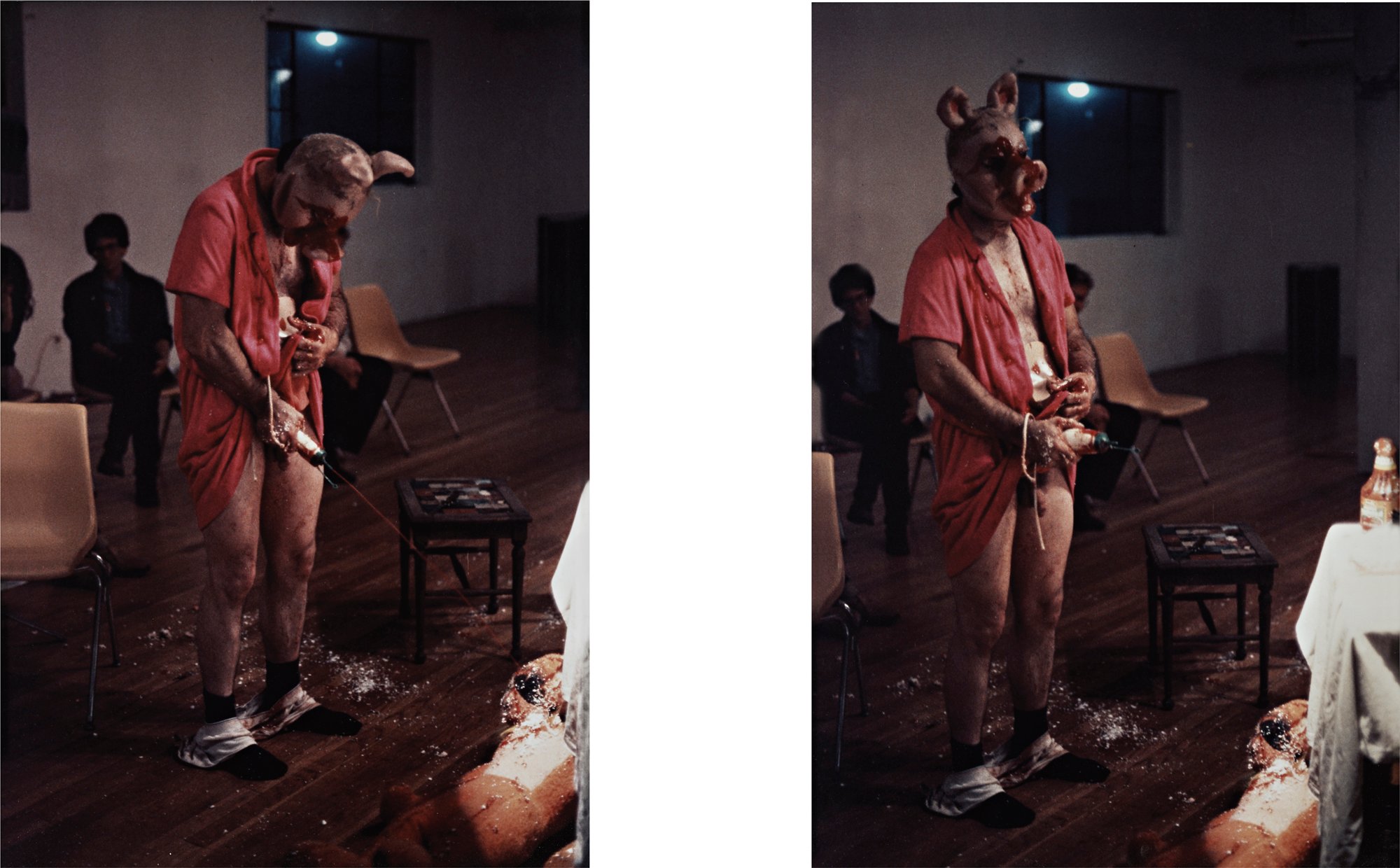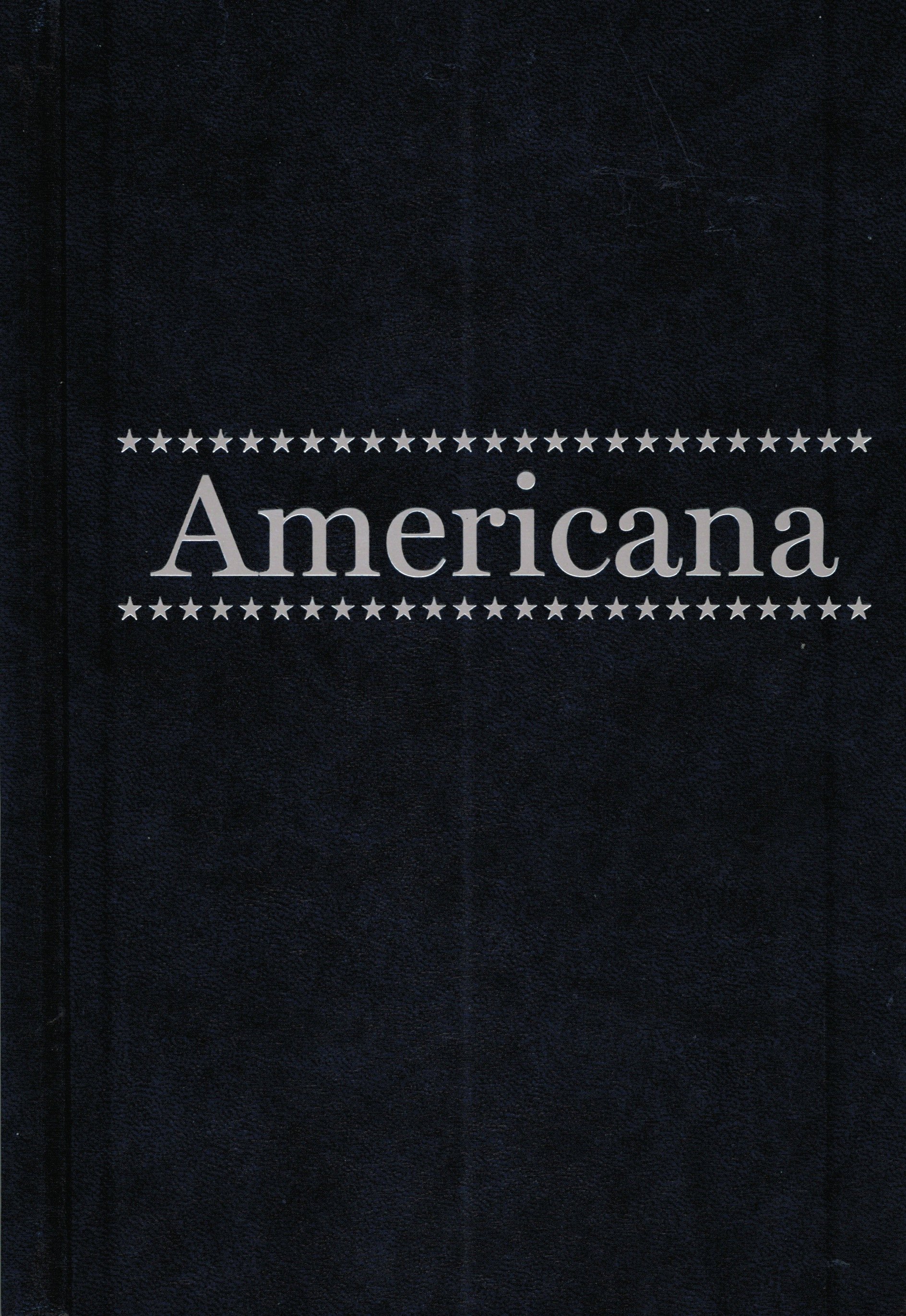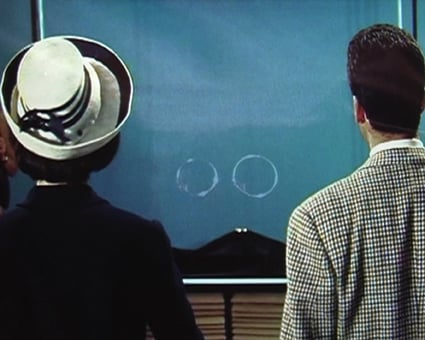
© » KADIST
Haris Epaminonda
Created from extracts of kitsch movies or Greek soap operas from the 1960s, these videos are like audiovisual ‘postcards’ reflecting a nostalgic and melancholic approach. The images have lost their context and original meaning to then be re-assembled, confronted to each other and superimposed with other elements, to reveal new sequences. The narration has disappeared from the sequences and the spectator waits in vain for something to happen.

© » KADIST
Haris Epaminonda
Haris Epaminonda’s work questions the manipulation and the flow of images as well as their power of fascination. The images she works with to create her collages (paper or video) come from magazines or history books, film extracts or soap operas from the 1960s and 1970s. By readapting a universal past (in her work on monuments) as well as personal (with tv series she used to watch as a child, etc.)

© » KADIST
Laurent Montaron
This film refers directly and fictionally to one of the first media dramas: the burning of the Zeppelin aircraft LZ 129 Hindenburg as it landed in New York in 1937. The power of these images, which were widely diffused in the press, had a profound haunting impact on people’s consciousness. This mode of transport – both futuristic and obsolete – crystallizes a collective imaginary which was fed by cinematic, literary and mythological fiction as Barthes would put it.
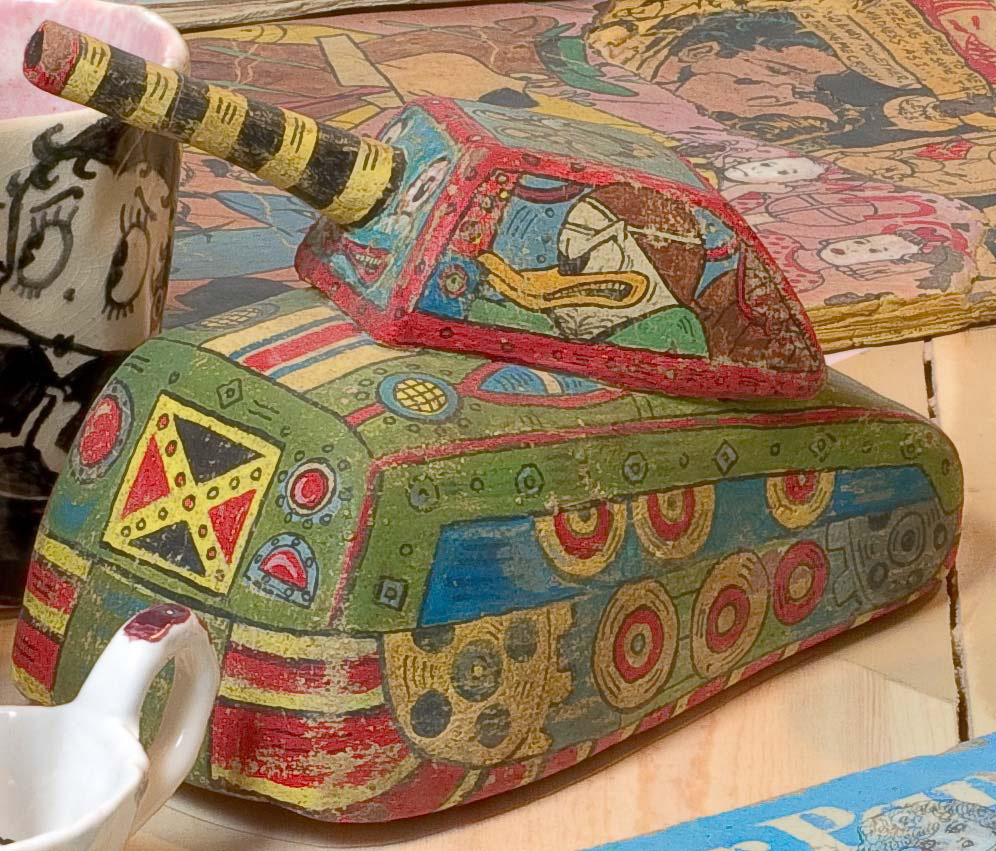
© » KADIST
Kristen Morgin
Donald of Doom Tank (2008) is a replica of a vintage metal toy with Donald Duck’s image one side and a soldier on the other. During World War II, the Walt Disney Company produced series of cartoon shorts that featured Donald Duck’s nightmare of working in an inhumane artillery factory in Nazi Germany and serving in the U. S. Army. By animating and normalizing war and military life, these cartoons not only achieved widespread popularity, but functioned as government propaganda.

© » KADIST
Kelley Walker
The triptych Black Star Press is part of the series ‘The Black Star Press project’ initiated in 2004 by the American artist Kelley Walker. The images in this series are taken from a photo essay on the struggle for civil rights in Alabama, directed by Charles Moore in 1962 (and published by the magazine ‘Life’) which showed the repression of the black population and persistent inequalities in the southern United States. The title “Black Star Press” is taken from the name of the news agency where Charles Moore worked, and it refers to the young black man shot fighting for the rights of his community.
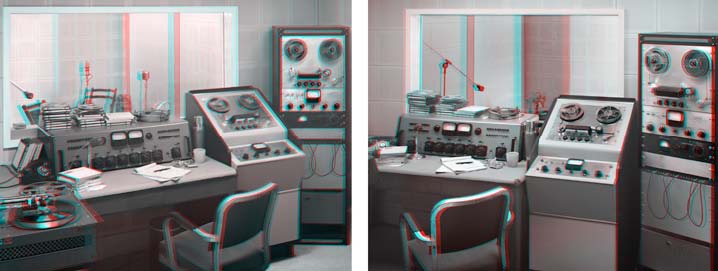
© » KADIST
Mark Soo
The two large-scale stereoscopic photographs in That’s That’s Alright Alright Mama Mama depict a recreation of Elvis Presley’s recording studio in Memphis, Tennessee. This study in doubles is underscored by its title, which repeats and doubles Elvis’s original song title. The images are hung in a specially angled wall and the viewers are provided special 3-D glasses in order to contemplate the image.

© » KADIST
Jun Nguyen-Hatsushiba
Filmed underwater, this is the third video in Nguyen-Hatsushiba’s “Memorial Project” series which began in 2001. The title already implies the cultural complexities about to be ironically unravelled: Ho Chi Minh is parodied and Okinawa (where this was filmed) was a battle site in Japan during World War II which then became an American training base during the Vietnam War. To a remix of James Bond movie tracks composed by Quoc Bao, no less than thirty divers in wet suits and full gear advance against the water resistance armed with cartridges of color.

© » KADIST
Raymond Pettibon
The five works included in the Kadist Collection are representative of Pettibon’s complex drawings which are much more narrative than comics or cartoon. The images allude to recurring topics, such as the superhero (present both in Untitled Superman and No title without the comics ), a book cover (his literary sources), or a mushroom cloud. Inspired by the writings of William Faulkner, Daniel Defoe, Gustave Flaubert, Marcel Proust, and James Joyce, Pettibon’s sophisticated, witty drawings combine image and text to explore the gamut of American popular culture.

© » KADIST
Luke Butler
Drawing & Print (Drawing & Print)
In Captain X , Star Trek’s Captain Kirk, played by William Shatner, is limply draped over a large boulder in what looks like a hostile alien environment. However, Kirk’s passive pose doesn’t so much suggest the aftermath of a battle as it does heavy contemplation, depression, or utter despair. Captain X is part of a series of paintings depicting various Star Trek characters who are stricken with human emotion-—a tactic that diminishes the mythological grandeur associated with this heroic captain and his indefatigable crew.

© » KADIST
Raymond Pettibon
The five works included in the Kadist Collection are representative of Pettibon’s complex drawings which are much more narrative than comics or cartoon. The images allude to recurring topics, such as the superhero (present both in Untitled Superman and No title without the comics ), a book cover (his literary sources), or a mushroom cloud. Inspired by the writings of William Faulkner, Daniel Defoe, Gustave Flaubert, Marcel Proust, and James Joyce, Pettibon’s sophisticated, witty drawings combine image and text to explore the gamut of American popular culture.

© » KADIST
Paul McCarthy
Memory Mistake of the Eldridge Cleaver Pants was created for the show Paul McCarthy’s Low Life Slow Life Part 1 , held at California College of the Arts’s Wattis Institute in 2008 and curated by McCarthy himself. In homage to an influence in his early career, McCarthy attempted to reconstruct a pair of pants worn by Black Panther revolutionary Eldridge Cleaver in a picture that appeared in Rolling Stone magazine in the 1970s. But in the process, McCarthy misremembered their original design of the pants, which had black outer panels and white inner panels in white, and left a black shape highlighted in the crotch area.

© » KADIST
Douglas Gordon
Blind Spencer is part of the series “Blind Stars” including hundreds of works in which the artist cut out the eyes of Hollywood stars, in a symbolically violent manner. An emptiness (some are burned letting appear a white or mirror background or a mirror) replaces the eyes, giving the impression of a blind eye deprived of all expression. Paradoxically, the work looks at us all the more intensely.
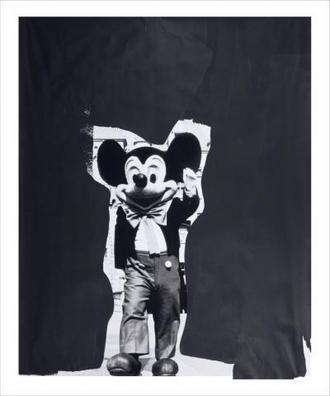
© » KADIST
Paul McCarthy
Drawing & Print (Drawing & Print)
To make Mickey Mouse (2010), Paul McCarthy altered a found photograph—not of the iconic cartoon, but of a man costumed as Mickey. On his shoulders he supports an enormous false head, Mickey’s familiar face grinning with glossy eyes. The artist has marked out in heavy black the background of Cinderella’s castle.
Paul McCarthy
- location: Los Angeles, California
- year born: 1945
- gender: male
- nationality: American
- home town: Salt Lake City, Utah
Haris Epaminonda
Epaminonda’s video works are based on re-shot excerpts of film and television footage – principally the Greek soap operas and kitsch romantic films fromthe 1960s that used to fill up Sunday afternoons in the artist’s Cypriot childhood –which she then subtly reworks...
Raymond Pettibon
- location: Hermosa Beach, California
- year born: 1957
- gender: male
- nationality: American
- home town: Tucson, Arizona
Kelley Walker
- location: Columbus, United States
- year born: 1969
- gender: male
- nationality: American
Jun Nguyen-Hatsushiba
- location: Vietnam
- year born: 1968
- gender: male
- nationality: Japanese-Vietnamese
- home town: Tokyo, Japan
Luke Butler
- location: San Francisco, California
- year born: 1971
- gender: male
- nationality: American
- home town: New York, New York
Douglas Gordon
- location: Berlin, Germany
- year born: 1966
- gender: male
- nationality: Scottish
- home town: Glasgow, United Kingdom
Mark Soo
Born in Singapore, raised in Malaysia, and based in Canada, artist and curator Mark Soo’s practice is concept-driven and research-based...
Laurent Montaron
Using a variety of media – photography, film, sound, installation, sculpture – Laurent Montaron’s work ‘renders an image’ in Mélancolia (2005) the magnetic band of an echo chamber endlessly loops and unwinds to become a hypnotic serpentine line...
-
2000-2009
Douglas Gordon
2002Blind Spencer is part of the series “Blind Stars” including hundreds of works in which the artist cut out the eyes of Hollywood stars, in a symbolically violent manner...
Jun Nguyen-Hatsushiba
2003Filmed underwater, this is the third video in Nguyen-Hatsushiba’s “Memorial Project” series which began in 2001...
Kelley Walker
2004The triptych Black Star Press is part of the series ‘The Black Star Press project’ initiated in 2004 by the American artist Kelley Walker...
Raymond Pettibon
2005The five works included in the Kadist Collection are representative of Pettibon’s complex drawings which are much more narrative than comics or cartoon...
Laurent Montaron
2006This film refers directly and fictionally to one of the first media dramas: the burning of the Zeppelin aircraft LZ 129 Hindenburg as it landed in New York in 1937...
Haris Epaminonda
2007Created from extracts of kitsch movies or Greek soap operas from the 1960s, these videos are like audiovisual ‘postcards’ reflecting a nostalgic and melancholic approach...
Haris Epaminonda
2007Haris Epaminonda’s work questions the manipulation and the flow of images as well as their power of fascination...
Raymond Pettibon
2007The five works included in the Kadist Collection are representative of Pettibon’s complex drawings which are much more narrative than comics or cartoon...
Kristen Morgin
2008Donald of Doom Tank (2008) is a replica of a vintage metal toy with Donald Duck’s image one side and a soldier on the other...
Luke Butler
Drawing & Print
2008(Drawing & Print) In Captain X , Star Trek’s Captain Kirk, played by William Shatner, is limply draped over a large boulder in what looks like a hostile alien environment...
Paul McCarthy
2008Memory Mistake of the Eldridge Cleaver Pants was created for the show Paul McCarthy’s Low Life Slow Life Part 1 , held at California College of the Arts’s Wattis Institute in 2008 and curated by McCarthy himself...
-
2010-2019
Paul McCarthy
Drawing & Print
2010(Drawing & Print) To make Mickey Mouse (2010), Paul McCarthy altered a found photograph—not of the iconic cartoon, but of a man costumed as Mickey...
